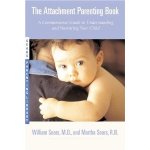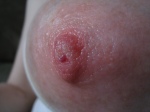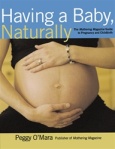 I went into reading The Attachment Parenting Book: A Commonsense Guide to Understanding and Nurturing Your Baby by William Sears M.D., and Martha Sears, R.N. knowing that there were many mixed reviews regarding Dr. Sears’ books.
I went into reading The Attachment Parenting Book: A Commonsense Guide to Understanding and Nurturing Your Baby by William Sears M.D., and Martha Sears, R.N. knowing that there were many mixed reviews regarding Dr. Sears’ books.
Overall, I found the book to be very well laid out with equal amount of text given to each of Dr. and Mrs. Sears’ seven “Baby B’s”: Bonding, Breastfeeding, Babywearing, Belief in Baby’s Cries, Bedding Close to Baby, Balance, and Beware of Baby Trainers. The introduction is very effective in introducing a curious parent to attachment parenting, but it does risk offending parents who may not have used attachment parenting with previous children (more on this later). There is a section guiding parents who want to apply attachment parenting but both need to work; and a section especially for fathers, which I found important because many parents seem to feel offended by the idea of attachment parenting because they believe that the mother is the primary caregiver and the father is left to watch from the sidelines. There is also a section for special circumstances such as children with disabilities and adopted children (both experiences that the Sears have had with their own children). There is also a great deal of emphasis throughout the book on dealing with fussy or “high need” children who, according to the Sears, benefit the most from attachment parenting.
Now that I’ve given a general overview of the book’s structure, I think it’s important to address some of the negative reviews I found of Dr. and Mrs. Sears book. Two of the things most addressed in negative comments of The Attachment Parenting Book include:
- The assumption by the Sears that attachment parenting is the absolute best and only way to raise children properly and
- The lack of facts and science to back up much of the claims
I did find both of these comments to hold true. Dr. and Mrs. Sears do assume that you as a parent (or parent-to-be) agree that attachment parenting is the very best way of raising children and I can see where this would seem very oppressing to a parent who is curious about attachment parenting and is looking for unbiased information on the topic. I think that simply being armed with the knowledge of the Sears’ attitude helps to alleviate some of the defensiveness that a parent might feel when reading, and allow them to see the value in the information.
Regarding the lack of science, I was slightly perturbed with the number of claims made by the Sears regarding the positive effects on children due to their attachment parenting upbringing and the lack of scientific evidence. Most of the evidence is anecdotal, and Dr. Sears expects you to take his word for it from his many years of pediatric experience, and from his use of attachment parenting with many of his 8 children. There are also short parent testimonials included in each chapter which serve as an “evidence” of sorts to attest to the effectiveness of attachment parenting. Two or three scientific studies are mentioned in the book, one by Dr. Sears himself regarding the benefits of sleeping close to your baby as a way to help the baby maintain regular breathing patterns.
Overall, I found the book to be very helpful in giving the reader a strong foundation in what attachment parenting is while also providing some how-to information on each topic. I would have liked to see more diagrams, but those included in the book (co-sleeping arrangements, ways to carry baby in a sling, and ways for father to bond skin-to-skin with baby) were very helpful in being able to visualize what to do. The book did an excellent job of encouraging parents to apply attachment parenting as much as they can while insisting that attachment parenting is not an all-or-nothing ordeal, and that some parents might find things useful that others might not. They assure readers that there is no wrong way of doing things as long as you are respectful of your baby’s needs.
This book is a good overview, but it does leave the reader wanting more information on the different parts of attachment parenting (for me: mainly breastfeeding and co-sleeping each of which has many books devoted entirely to it). You will be most interested in this book if you already agree that attachment parenting is for you, and you want to obtain a solid foundation of knowledge regarding the main aspects of attachment parenting. It is a great jumping off point for a parent to delve into the aspects of attachment parenting that they would like more specific, or scientific, information on.
 Today my new little one is two days old and we’ve been working hard on our breastfeeding relationship. I’ve had some nipple soreness, but after some advice from family regarding proper latch-on, I thought we were doing alright and figured the discomfort would ease up…at least until I fed her this evening
Today my new little one is two days old and we’ve been working hard on our breastfeeding relationship. I’ve had some nipple soreness, but after some advice from family regarding proper latch-on, I thought we were doing alright and figured the discomfort would ease up…at least until I fed her this evening 


